Fault diagnosis in connection with long start time, diesel
Symptom: Difficult to start engine. Reduced driveability.
| Fault diagnosis in connection with long start time, diesel |
| Background |
In connection with long start times and impaired driveability when the car has been parked overnight or on a hill, the fuel system should be tested for leakage.
Symptoms
Difficult to start engine. Reduced driveability.| Parts required |
47 73 354 Hose for return fuel line (by the metre)
95 44 271 T-unions
2 x 2 copper washers for the fuel line connection on the pump
95 42 929 O-ring for fuel bridge
95 42 903 Injector seal
| Tools |
83 93 514 Boost pressure gauge
30 14 883 Pressure/vacuum pump
30 31 069 Union, bleeding equipment
83 95 584 Adapter kit, leak detection, fuel lines
30 07 739 Hose pinch-off pliers
88 19 096 Bleeding equipment
83 96 418 Leakage detection adapter
| Diagnostic procedure |
|
|||||||
| • |
Work only in a well-ventilated area! If approved equipment for the extraction of fuel vapours is available, be sure to use it.
|
|
| • |
Wear suitable gloves! Prolonged contact with fuel can cause skin irritation or dermatitis.
|
|
| • |
Keep a class BE fire extinguisher near at hand! Be mindful of the danger of sparks caused by short circuits and when connecting and disconnecting leads in electrical circuits.
|
|
| • |
No smoking anywhere in the vicinity.
|
|
The following leakage tests are described:
A) The fuel bridge return lines
B) Suction line to tank
C) Return line
A) The fuel bridge return lines
| 1. |
Remove the engine cover.
|
|
| 2. |
Detach the hose branching's lower (common) end from the banjo nipple at the injector pump's suction connection. Check the hose end for damage and cracks. Connect the hose to
30 14 883 Pressure/vacuum pump
. Collect any oil spill.
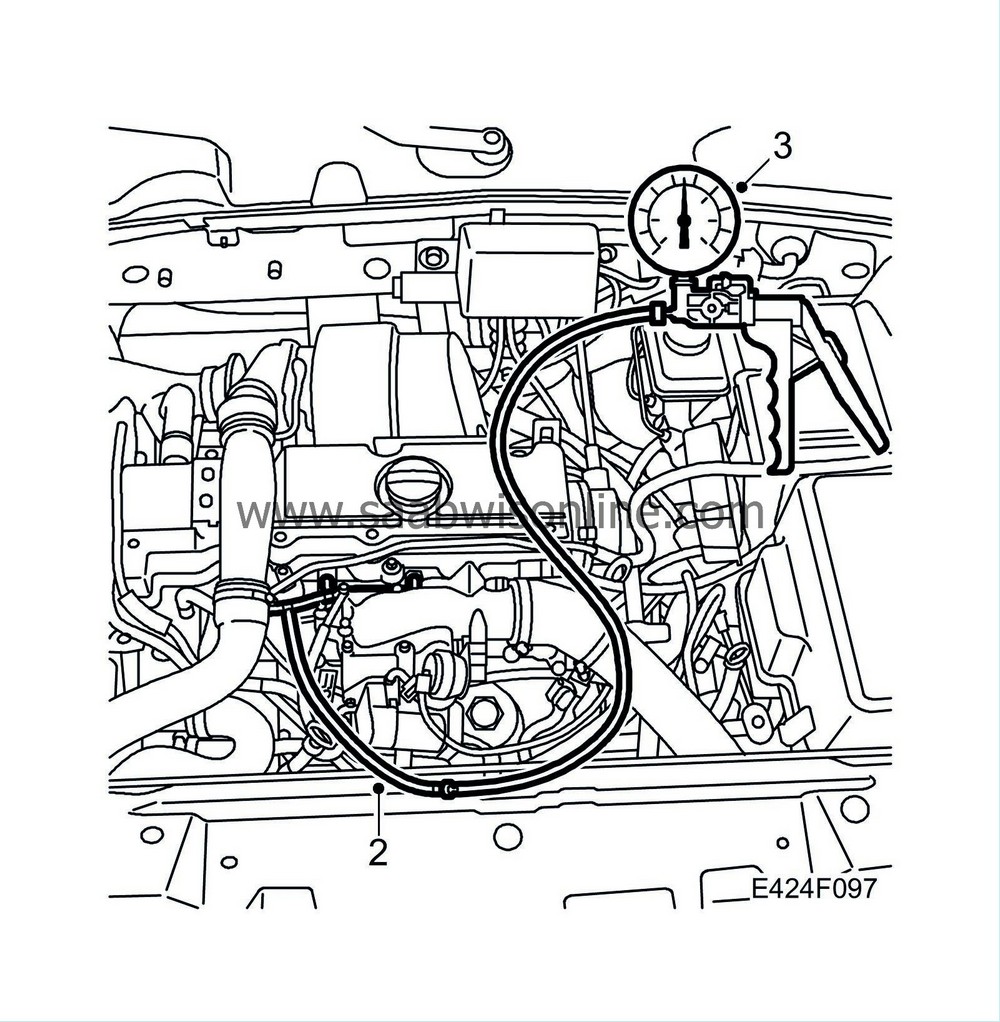
|
||||||||||
| 3. |
Create a negative pressure of -0.9 bar, wait approx. 10 minutes and check to see that the vacuum is maintained.
|
|
| 4. |
If leakage is found, each individual return connection should be checked from its respective fuel bridge as follows:
|
|
| 5. |
Remove the charge air pipe and plug the hoses.
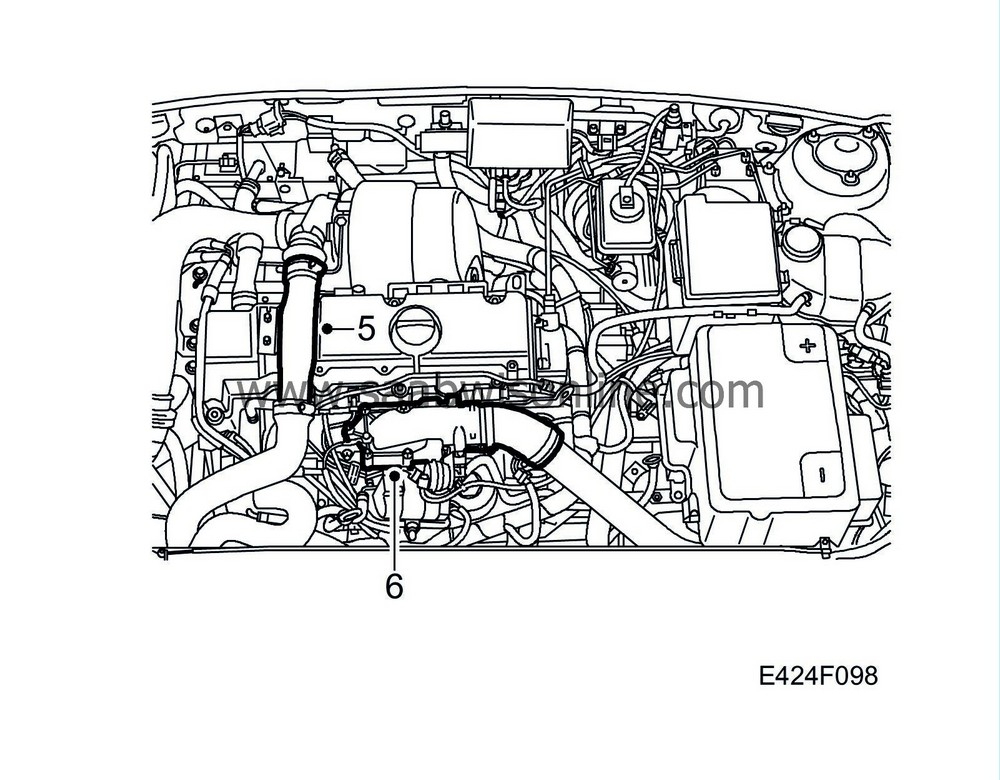
|
|
| 6. |
Detach the upper section of the throttle body and move aside. Detach the hose branching from the injector connection bridges.
|
|||||||||||||
| 7. |
Connect
30 14 883 Pressure/vacuum pump
in order to the four nipples on the fuel bridges. Create a negative pressure of -0.9 bar, which should be maintained for about 10 min. If the pressure changes, replace all four O-rings and the sealing sleeves between the injector and fuel bridge. See
Fuel bridge, 4-cyl
.
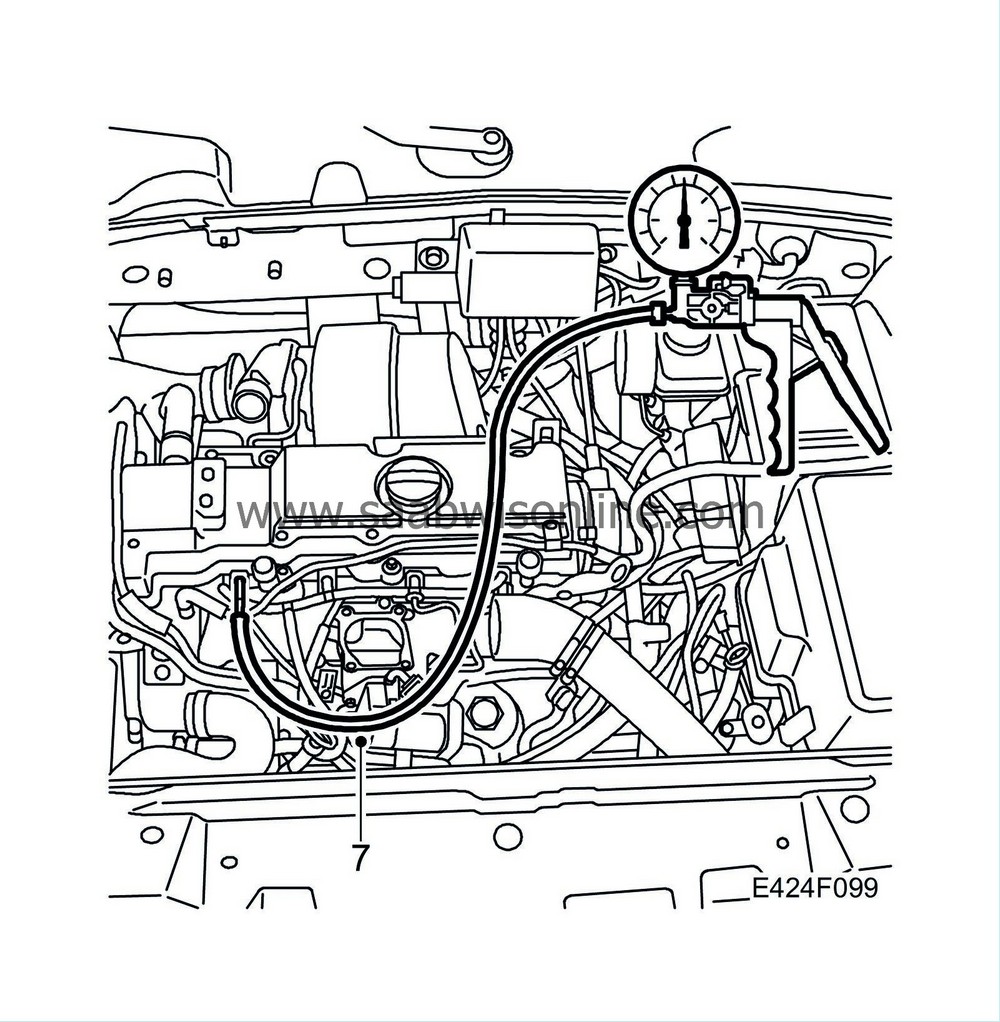
|
|
| 8. |
Fit the new fuel return hoses on the fuel bridges. Check the T-unions that connect the fuel return hoses for damage, cracks, etc. Replace if necessary.
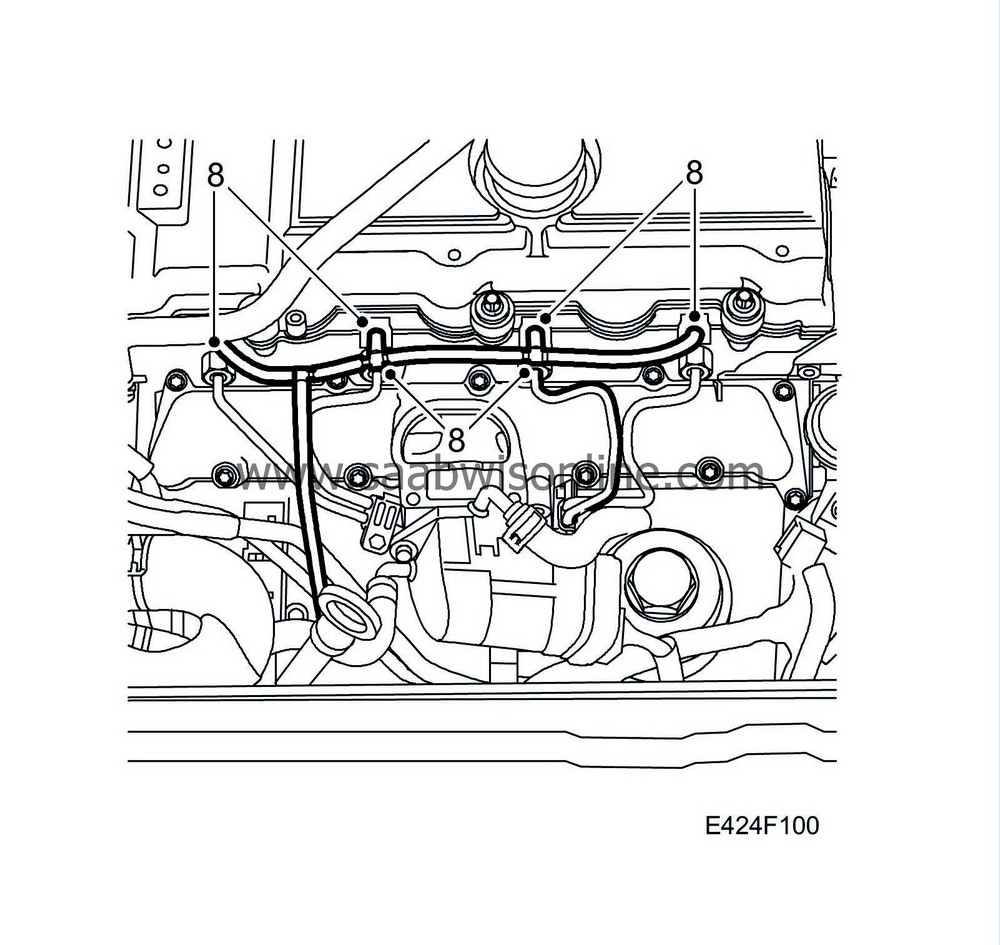
|
|
| 9. |
Carry out a new leakage test by connecting the vacuum pump to the lower common hose to the intake manifold on the fuel pump as described in point A.
|
|
| 10. |
Fit the hose to the banjo nipple at the injection pump suction connection.
|
|
| 11. |
Fit the upper section of the throttle body.
|
|
| 12. |
Remove the plugs and fit the charge air pipe.
|
|
B) Suction line to tank
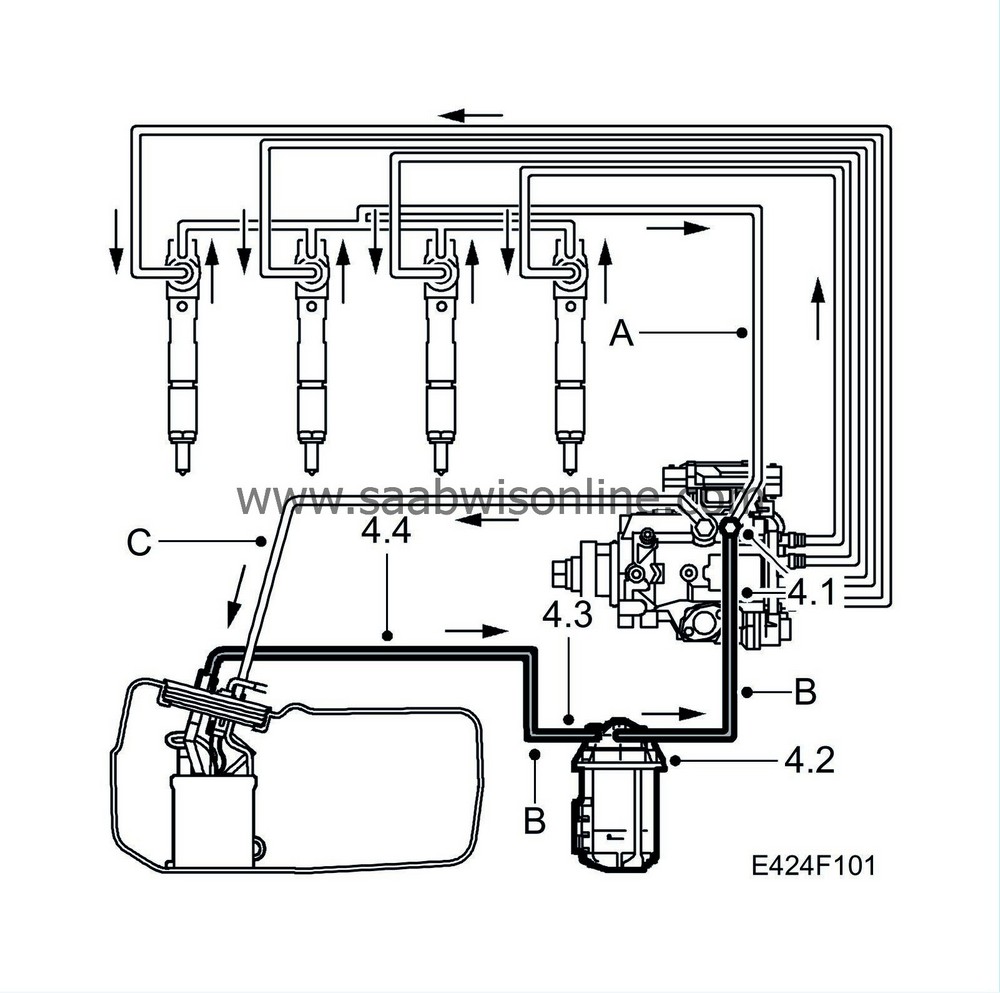
Raising the front assembly of the car (alternatively parking on a slope) increases the fuel system sensitivity to leakage. We therefore recommend having the front assembly in a raised position during fault diagnosis.
Leakages in these situations are usually so small that the passage of fuel cannot be perceived. There is, however, passage of air, which supplies air to the fuel system.
| 1. |
Connect
83 93 514 Boost pressure gauge
and
83 95 584 Adapter kit, leakage detection, fuel lines
with a hose to the service outlet on the suction line. (Suspend the manometer, for example, from the bonnet lock as illustrated).
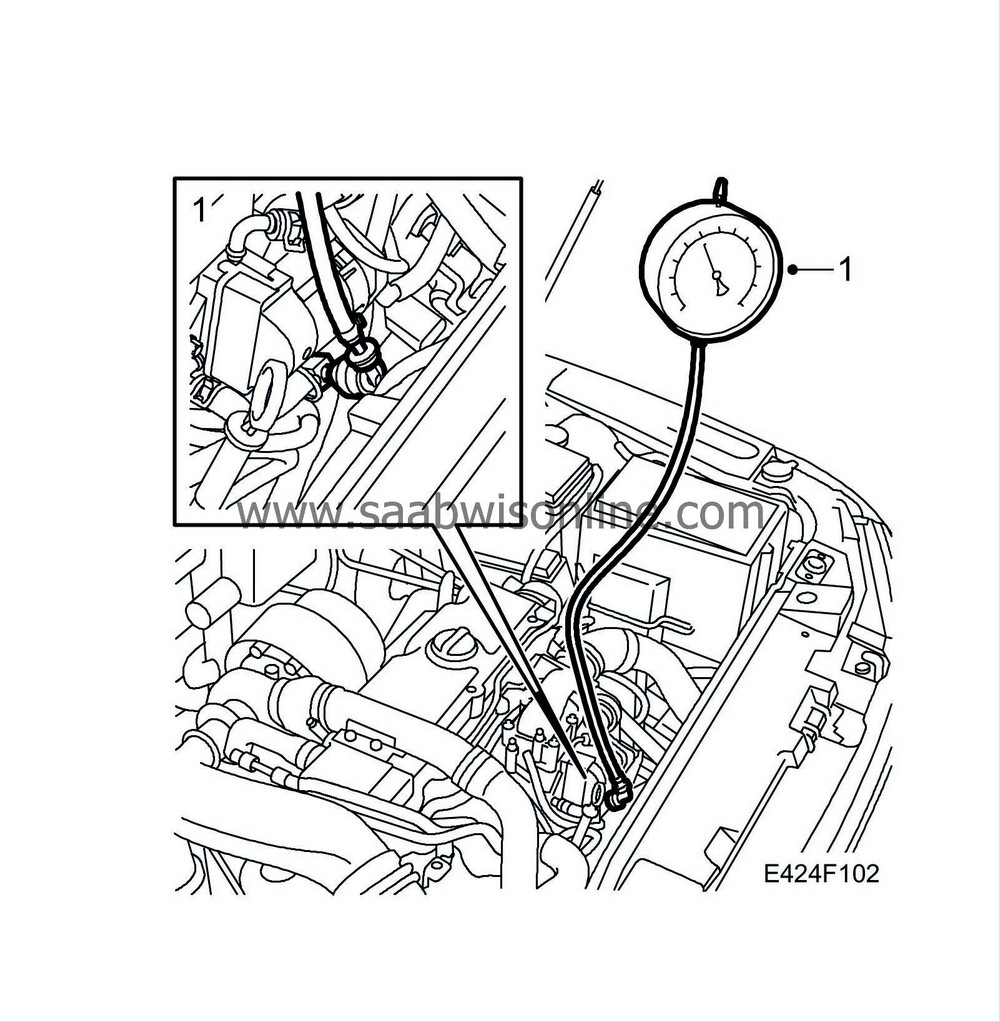
|
|
| 2. |
To be able to detect leakages faster, raise the front of the car approx. 70 cm. Use axle stands.
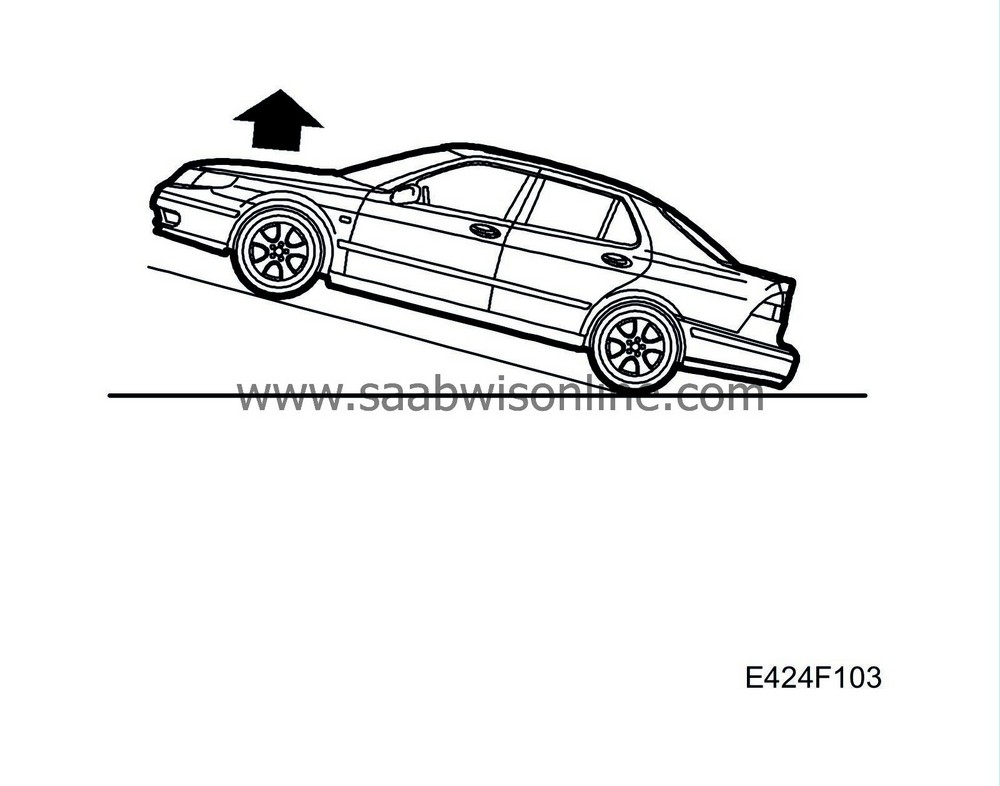
|
|
| 3. |
Start the engine and let it run a few minutes. Stop the engine and read the manometer, which due to the angle of the car and fuel quantity in the tank indicates between -0.04 - 0.08 bar. Too low a vacuum at idling speed (lower than -0.20 bar) can indicate a blocked filter or restricted suction line. Leave the car stationary for approx. 2 hours. The pressure reading should remain the same.
|
|
| 4. |
A loss of negative pressure indicates a leak in the suction line at one of the following locations: (investigate and rectify in the following order)
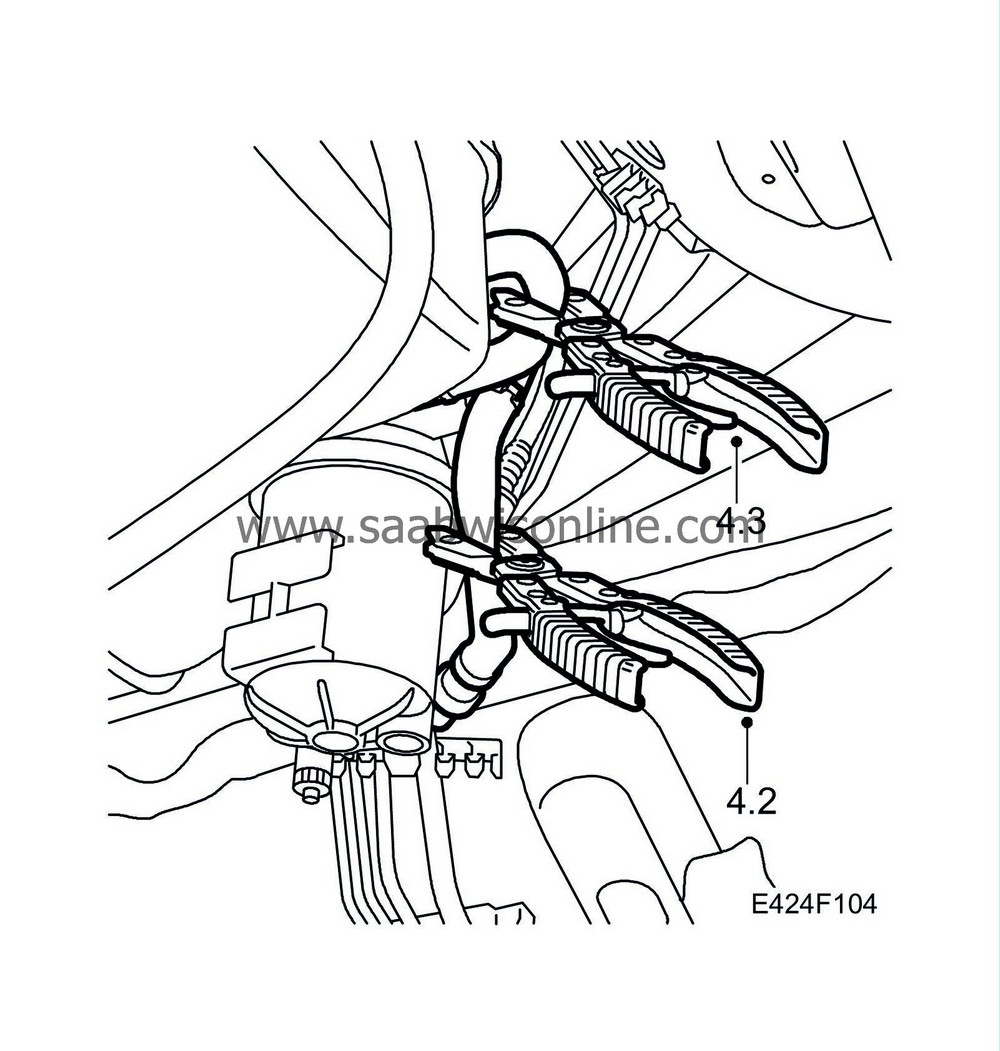
4.1) The suction line banjo connection to the injection pump. -Check the sealant surfaces against the copper gaskets (on pump, banjo nipple and hollow screw respectively). -Replace copper gaskets on banjo connection. -High standards of cleanliness (there must be no dirt particles in connection with these surfaces). 4.2) Fuel filter connections, cap or housing. If the leakage still remains after pos. 4.1 has been rectified, the corresponding test with a manometer can be carried out. The rubber hose in front of the fuel filter must be clamped at the same time after the engine has been switched off (see pos 4.2). The hose is thereby blocked during the set up. To be able to check possible leakages in the fuel filter, repeat the test with the manometer but this time move the pinch-off pliers to the feed line as illustrated. (pos 4.3) 4.3) Connection to fuel tank and damaged fuel line from tank to filter Leakage remains after the tests are carried out and remedies are performed - leakage between tank connection and connection to fuel filter. Check the tank connection and the supply line to the fuel filter. See To remove under Fuel tank . If the tank is removed, first perform leakage test C. |
|
| 5. |
On completion we recommend checking the fault diagnosis and repair as follows: Warm up the car and park it with the front raised (on a hill or on axle stands) for 12 hours. Start the engine, which should now start without any delay.
|
|
C) Return line
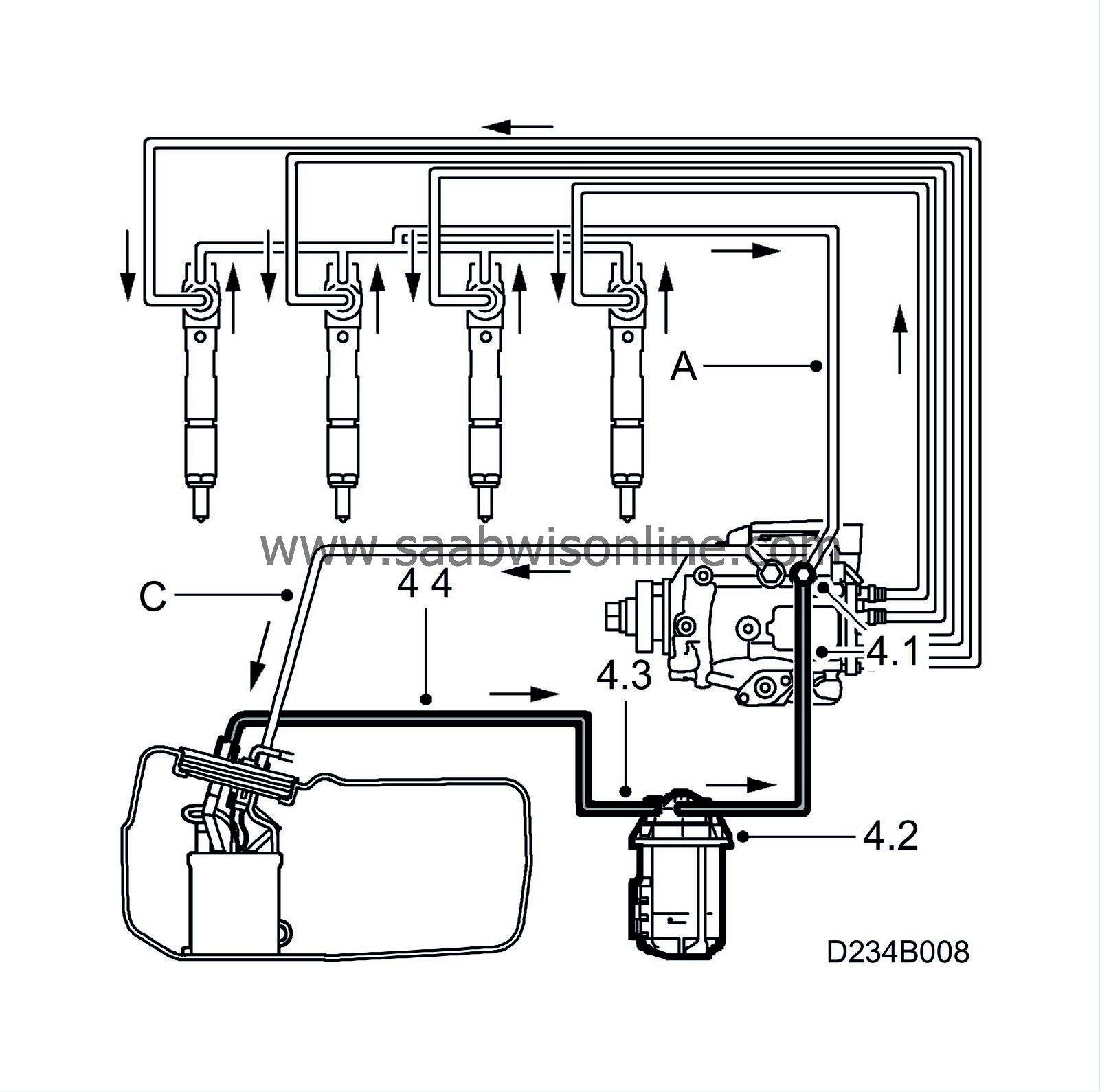
| 1. |
Clean and undo the return hose's quick coupling and fit 83 96 418 Leakage detection adapter.
|
|
| 2. |
Connect
83 93 514 Boost pressure gauge
and
83 95 592 Adapter kit, leakage detection, fuel lines
to the T-nipple service outlet. Start the engine and read the manometer. Pressure must not exceed 1.0 bar. Excessively high pressure indicates blockage on the return side. Switch off the engine.
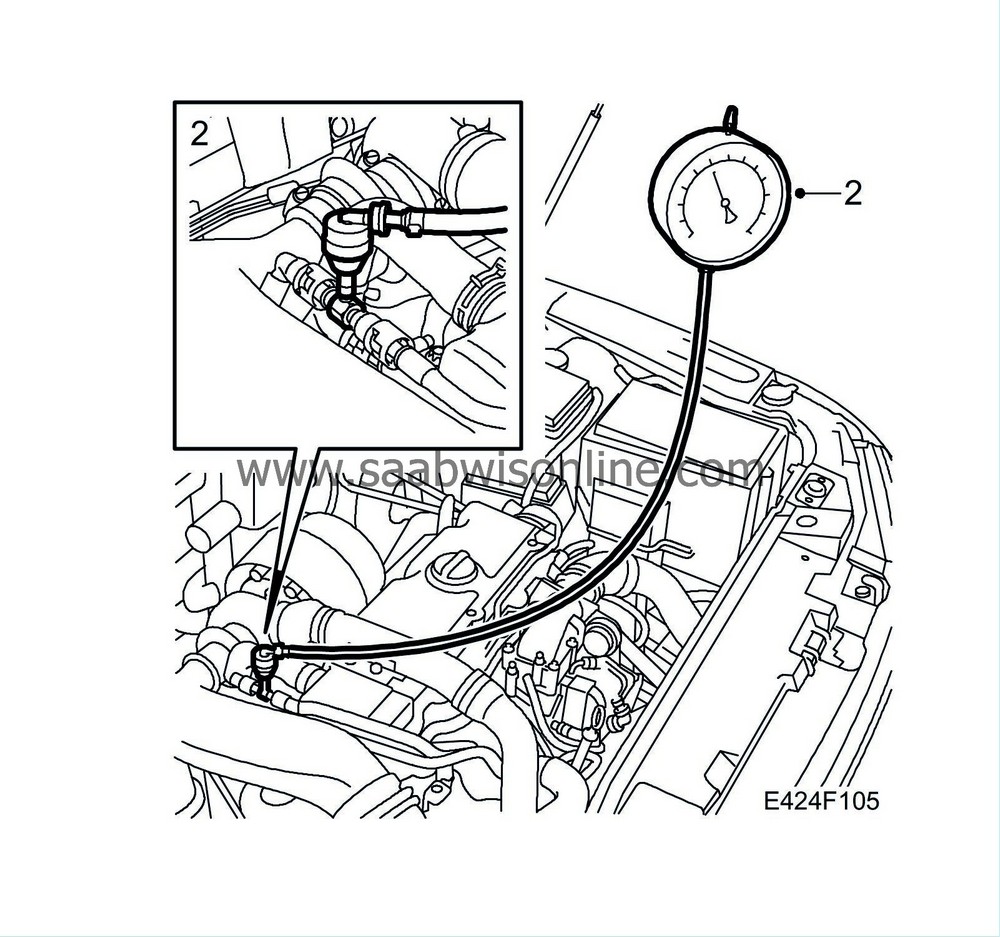
|
|
| 3. |
Check the return line for kinks. Check the ejector in the fuel level sensor for impurities. See To remove under
Fuel level sensor
.
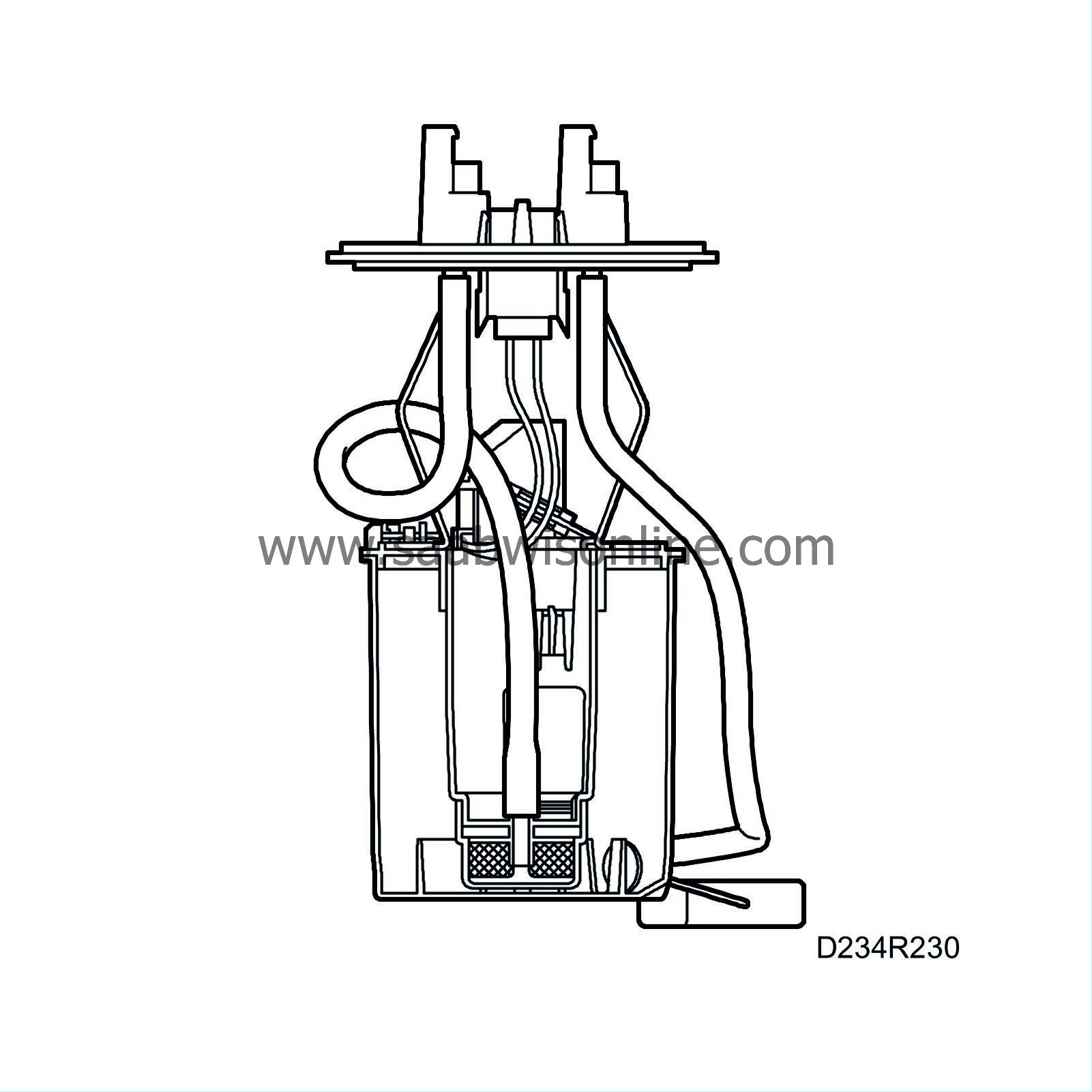
|
|
| 4. |
Put the ignition in the OFF position, undo the manometer connection, remove the T-nipple and connect the return line. Have a cloth on hand for any fuel spill.
|
|
Bleeding of fuel lines
To speed up bleeding the fuel system after air has entered, for example while changing a filter or when the fuel lines on the inlet side have been removed, use the method below.
| 1. |
Connect
30 31 069 Connection, bleeding equipment
to
88 19 096 Bleeding equipment
or equivalent and start the suction device.
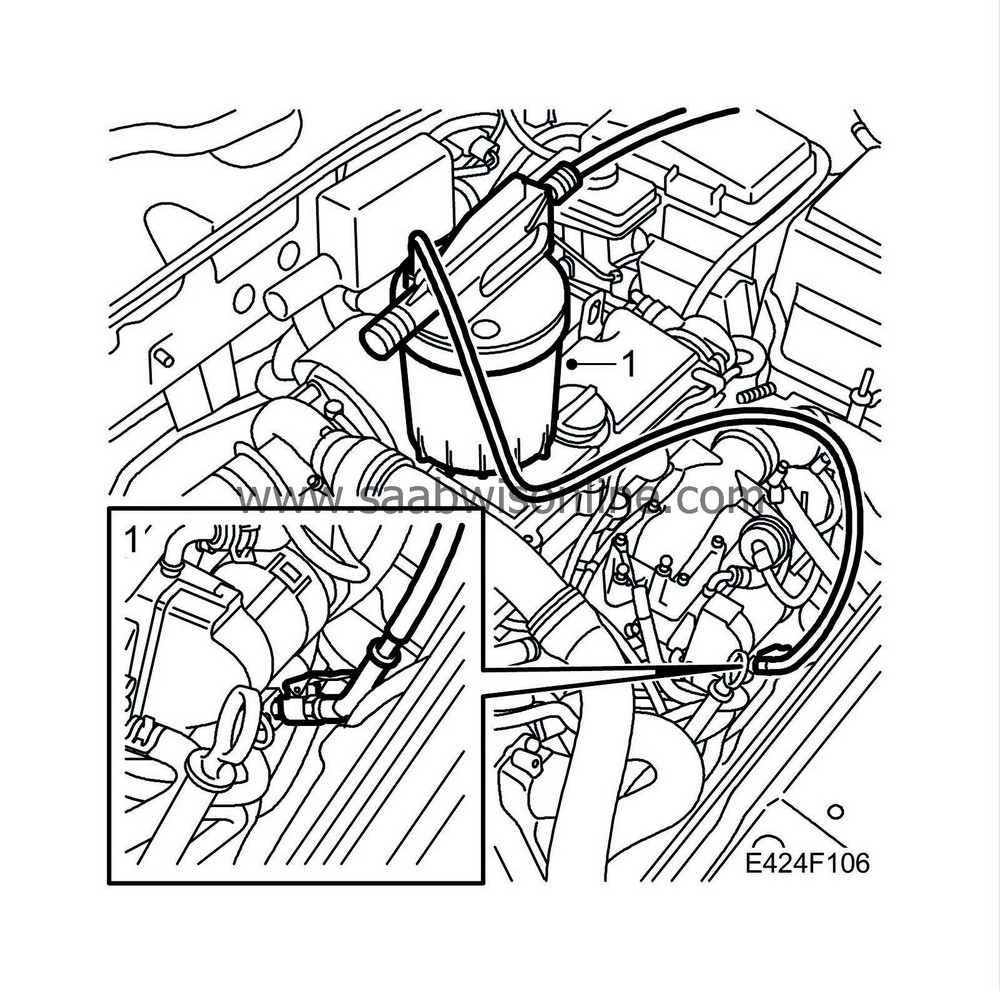
|
|
| 2. |
Remove the protective cap and connect the union to the service outlet on the fuel pump feed line.
|
|
| 3. |
Draw the fuel until a constant flow is visible in the suction line on the brake bleeding tool.
|
|
| 4. |
Remove the bleed nipple from the service outlet while there is still suction (to avoid fuel spillage and air entering the system.)
|
|
| 5. |
Put on the protective cap for the service outlet.
|
|

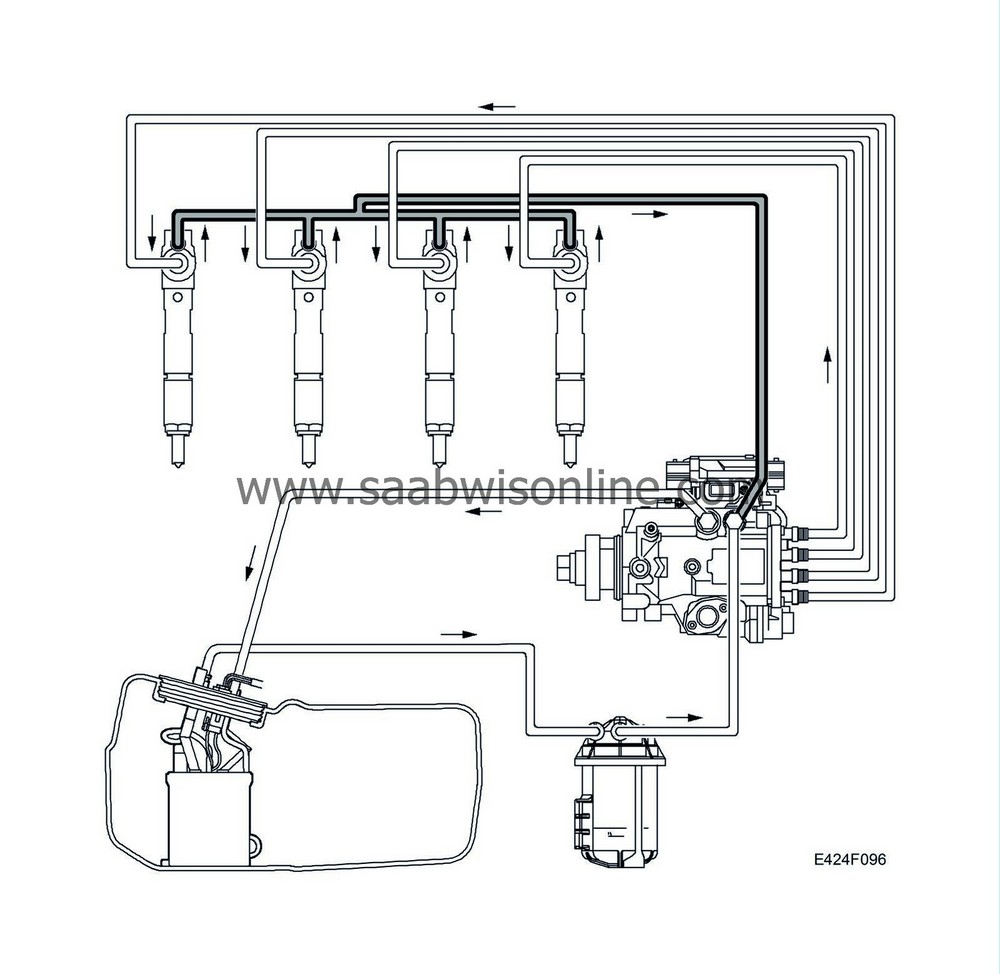
 Warning
Warning

